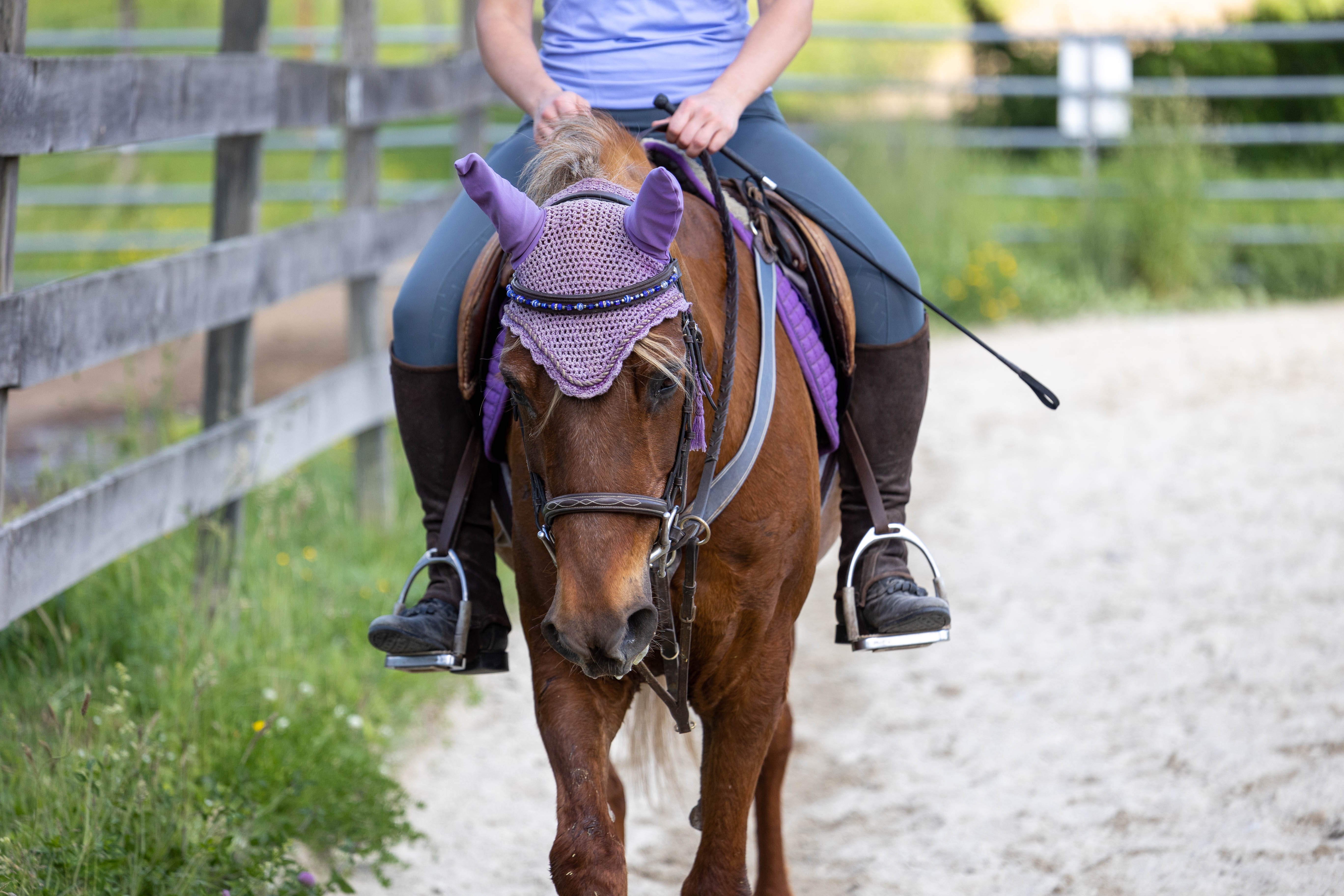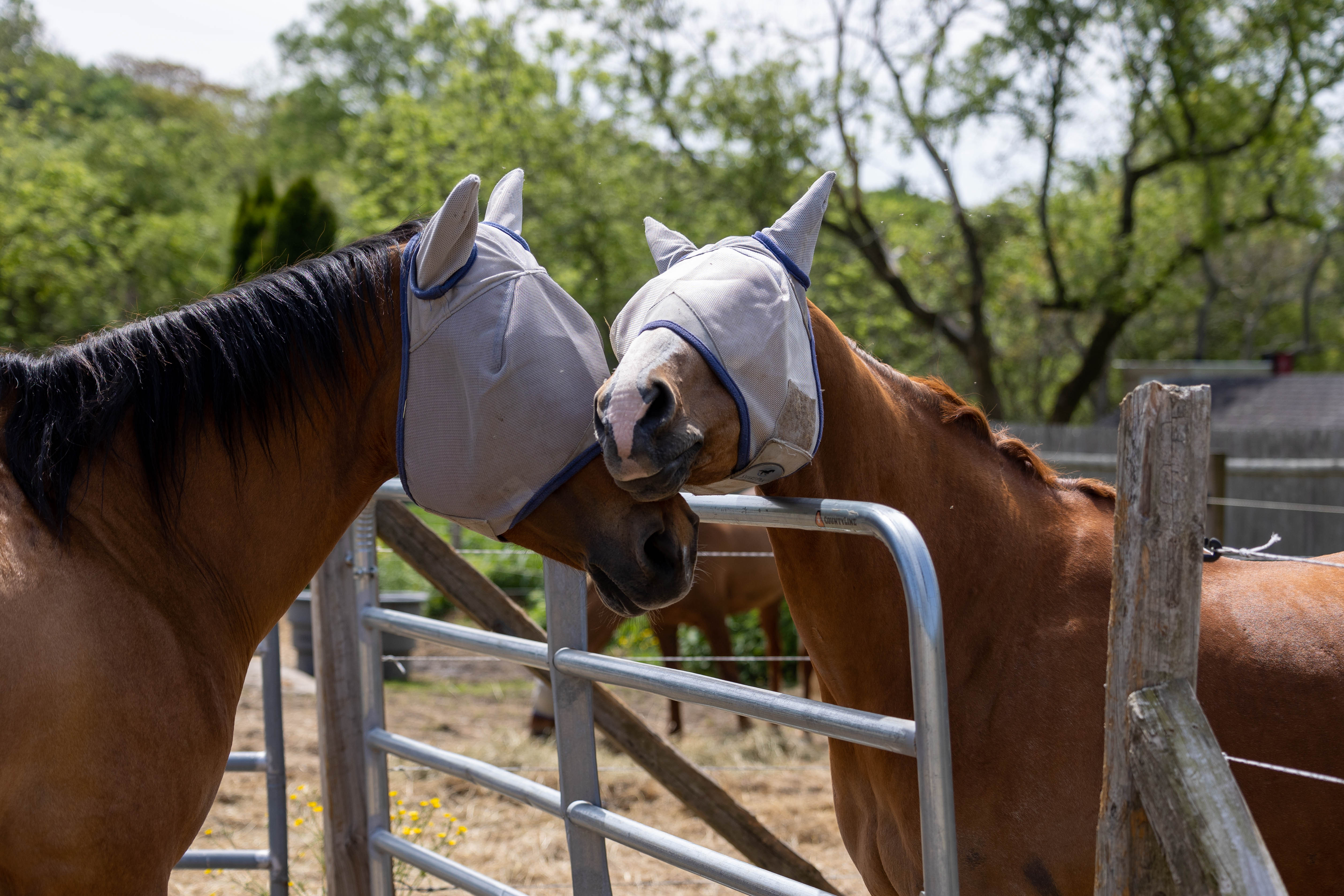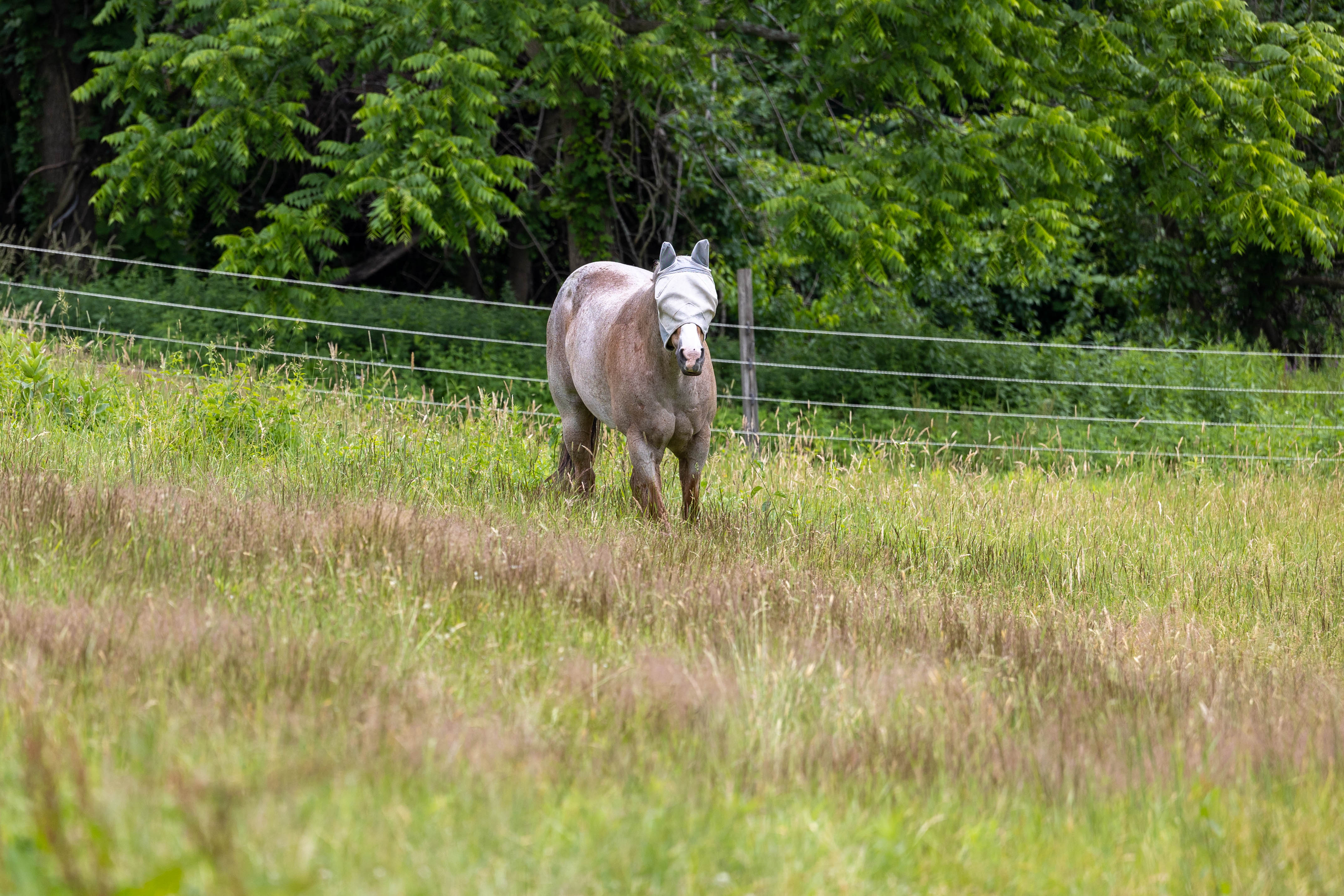With the warm summer air comes beautiful lush pastures, flowers, outdoor riding, competing and trail riding. It’s the best time of year for many equestrians. If you’re anything like me, you spend the rest of the year looking forward to summer. And with the glorious summer days comes the heat and the bugs. Flies, insects, ticks and more. You name it, if it’s a pesky insect it can be found in the barn, in the arena and out in the pasture. Not only are bugs and insects irritating for us equestrians, but they can also be quite a problem for our equine friends. When it comes to protecting our horses from flies and other bugs there’s only so much we can do to make them more comfortable.
In addition to using a good quality fly repellant it’s also important to keep the bugs out of our horse’s eyes and ears.
In this article we’ll discuss the importance of using a good quality fly mask and how to choose and fit a fly mask correctly to provide your horse with maximum comfort during peak fly season.
This post may contain affiliate links which means that I may earn a small commission at no extra cost to you. As an Amazon Associate I earn from qualifying purchases.
What Is A Fly Mask?
A fly mask is a covering made to fit on a horse’s head to keep flies and other insects out of your horse’s eyes and ears. Fly masks are made of a mesh material that allows the horse to be able to see while wearing the mask and still have protection from bugs. And, don’t worry, your horse will be able to hear with a mask on just fine too!
Types Of Fly Masks & Ear Bonnets
There are quite a few varieties of fly masks and ear bonnets on the market. Here is a list of the different types of fly masks and their intended uses for your horse.
Thick Mesh: Some fly masks are made of a thick mesh material which can be a bit course but also more durable. A thicker mesh may hold up longer and be less likely to tear meaning it will effectively keep bugs and insects out.
Fine Mesh: Other fly masks are made from a thinner and softer mesh material which may be more comfortable for a horse with more sensitive skin.
Lycra with Mesh: A relatively new type of fly mask also on the market is made of lycra with mesh over the eye area. These masks are good for horses that constantly rub their masks off. However, this type of mask may cause the horse to get hot underneath.
Earless: There are also fly masks that only cover the eyes and and leave the ears uncovered. This could be helpful for a head shy horse that does not like to have their ears touched while still offering protection for the eyes.
Ear Bonnet: And last but not least, ear bonnets are made of cloth and crochet material and are meant to be worn underneath a bridle while riding. They keep bugs out of the horse’s ears and do not cover the eyes. Ear bonnets should not be used for turnout or left on a horse that is unattended.

Why Does My Horse Need A Fly Mask?
During the warm spring and summer months of the year the flies and other insects are in full effect. Just like you would put on fly spray to go out into the woods or a buggy area to avoid constantly swatting at flies, your horse needs protection too.
The constant biting of flies and other insects can be annoying at a minimum. They can also cause your horse a lot of stress, especially if they cannot escape being bitten. Horses also have sensitive skin around their eyes. Lastly, even if you wipe some fly repellant on your horse’s head, you can’t put it near your horse’s eyes leaving the most sensitive part of your horse’s face unprotected.
This is where a fly mask comes in handy. A fly mask will protect your horse’s face and ears from insects. Additionally, some fly masks have UV protection which is great for horses with light colored skin. Horses can get sunburns just like humans so protecting them from UV rays is also a plus.
When To Use A Fly Mask
It’s a good idea to use a fly mask when your horse is turned out (outside) during the day. If your horse becomes sweaty and their fly repellant starts to wear off they will still have protection around their eyes and ears.
It’s also a good idea to use an ear bonnet while riding during the warm months of the year to help your horse concentrate without the distractions from pesky bugs.
Do you find your horse constantly shaking his head, swishing his tail and becoming irritated while riding? An ear bonnet or fly mask intended for riding may be just what the doctor ordered.
Fly Masks I Recommend
When Not To Use A Fly Mask
As effective as a fly mask is at keeping bugs out of your horse’s eyes and ears there are times it is not appropriate to use one. While your horse can see through his fly mask, he may have trouble seeing at night with it on. The bright light of day makes it easier for your horse to see through the mesh.
In the dark or dim light it may be more difficult which could cause your horse to injure himself. For the same reason, it is not a good idea or necessary to leave a fly mask on your horse while he is in his stall during the day or night.
Fly masks can leave rubs on your horse’s head especially if your horse becomes itchy and hot underneath the mas. If he’s like mine that means a lot of rubbing. Removing the fly mask for the night time, during stabling, grooming and riding will help prevent your horse from getting a sore or rub on his skin.
Lastly, horses should not wear a fly mask in the rain. A soggy fly mask will be uncomfortable for your horse and the bugs aren’t typically out in the rain.
How To Choose
Choosing a fly mask that your horse won’t mind wearing can be a challenge but it is an essential piece of gear for all horse owners. Consider your horse’s personality and habits when deciding which type of mask to invest in. If your horse is destructive, plays hard or likes to rub, choose a mask that is durable or you may find yourself replacing it frequently.
If your horse has sensitive skin then you may be better off with a softer, finer mesh fly mask.
For new horse owners it may take a bit of trial and error to find out which type of fly mask will work best for your horse.
Size & Fit
Choosing the right size mask for your horse is important. The fly mask needs to fit correctly in order to give your horse proper coverage. Proper fit will also prevent flies and insects from getting underneath the fly mask. However, a mask that fits too tight can cause your horse to get a rub or sore on his skin.
When choosing a size, check the size chart for the height and weight recommendations. Many brands offer sizing that is comparable to halters and bridles. For example, the sizes offered may be pony, cob, horse and draft instead of typical sizes small to large.
Check the return policy before purchasing a fly mask. This way if the mask does not fit you will know if you can return it.
When adjusting the mask, make sure to fasten it loose enough that you can easily fit your fingers under the mask. Just make sure it’s not so loose that your horse can easily pull or rub the mask off. Although, some horses are just determined enough that they can pull any mask off even if it is properly fitted.

Keeping Your Fly Mask Clean
Lastly, it is crucial to keep your fly mask clean for multiple reasons. First, any dirt that gets caked on and stuck in the mesh can irritate your horse’s skin. Dirt on the mask and near the eyes can make it difficult for your horse to see. Secondly, keeping your mask clean will help it last longer and can prevent it from getting damaged.
Clean your fly mask by brushing it off. Use a hard brush or shake it out at the end of each day when you remove it from your horse. You can also easily wash it off with the hose.
I hope you found this article helpful! If you did please share it.


